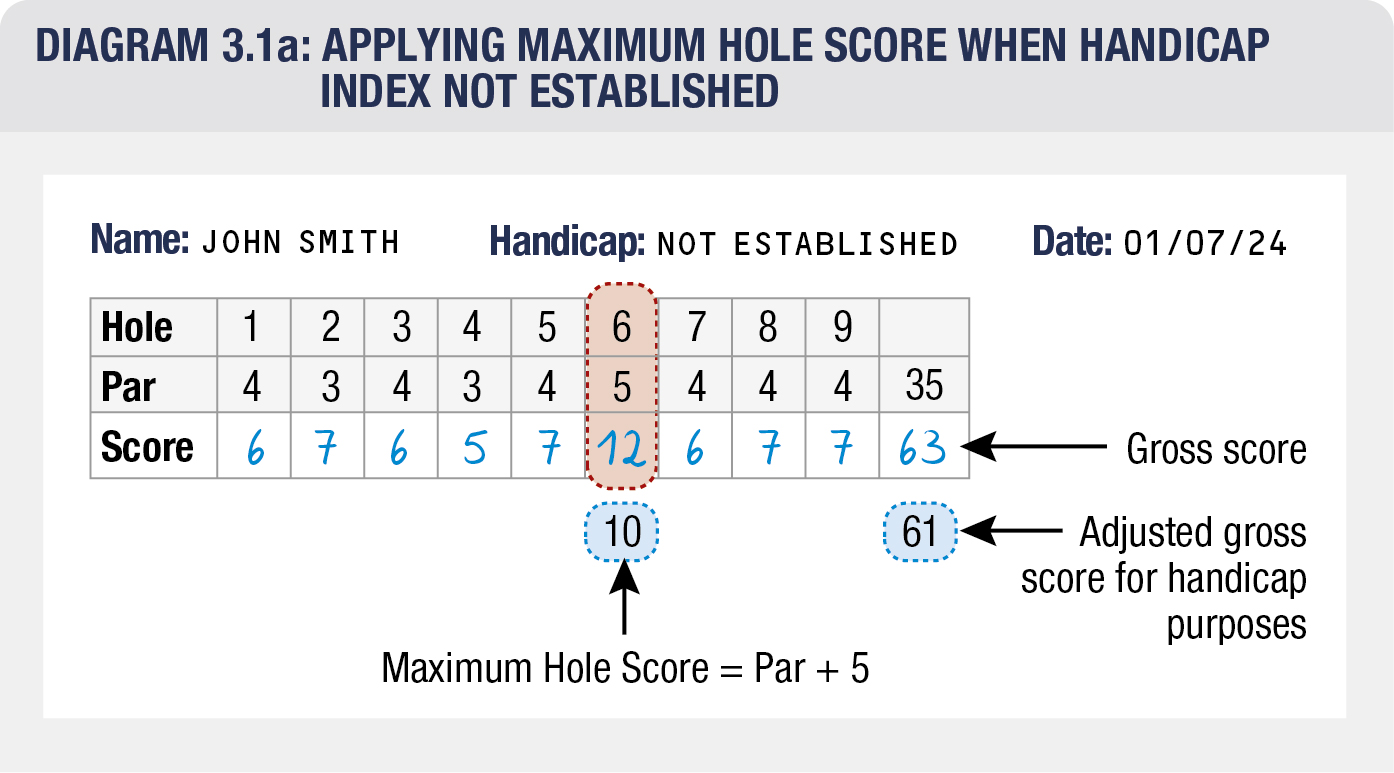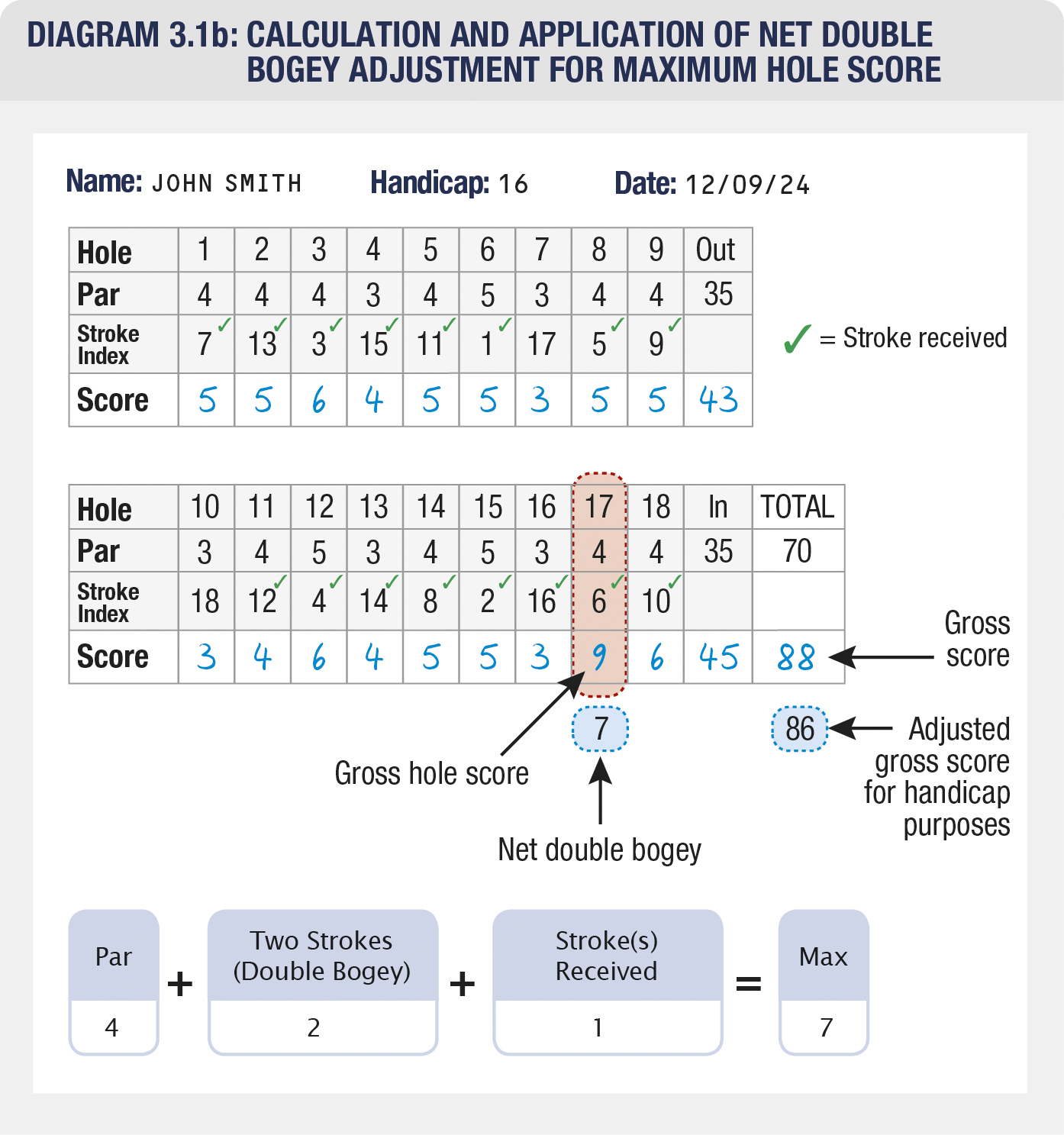3.1 Maximum Hole Score for Handicap Purposes
3.1a Before a Handicap Index Has Been Established
For a player submitting their first scores to obtain an initial Handicap Index, the maximum score for each hole played is limited to par + 5 strokes (see Diagram 3.1a).

3.1b After a Handicap Index Has Been Established
For a player with an established Handicap Index, the maximum score for each hole played is limited to a net double bogey, calculated as follows:
| Par of the hole | + | 2 strokes | + | Any handicap stroke(s) that the player receives on that hole* |
(*or minus any handicap stroke(s) that a plus handicap player gives back on that hole.)
(See Diagram 3.1b.)
- A net double bogey is equal to the lowest score on a hole for which the player would achieve zero Stableford points.
- There is no limit to the number of holes in a round where a net double bogey adjustment may be applied.
-
If, in the Terms of the Competition (see Rule 7.2a Terms of the Competition) or the handicap allowances, there are any restrictions on the number of strokes received, this restricted Playing Handicap should only be used for the purpose of the competition, for example to determine the:
- Finishing positions and prize winners, and
- Number of strokes given or received for different formats of play.
-
Where a Course Handicap is calculated at more than 54 and a player receives 4 or more strokes on a hole, the maximum hole score is par + 5 for handicap purposes.
-
Adjusting a hole score to a net double bogey can be done either:
- Automatically, when hole-by-hole score entry is used, or
- By the player, when submitting an adjusted gross score for the round.
The player’s full, unrestricted Course Handicap should be used for all applications of net double bogey adjustments. For this procedure the Course Handicap is rounded to the nearest whole number (see Rule 6.1 Course Handicap Calculation).
